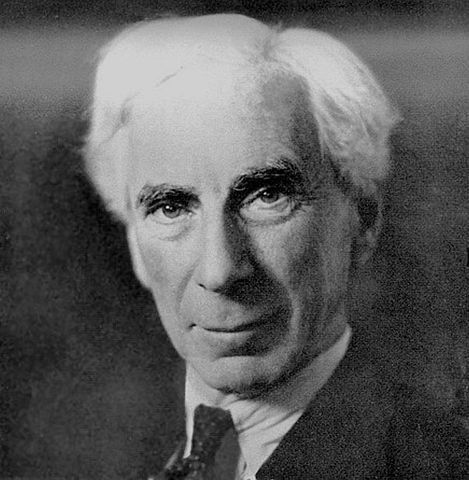Outside the shop of a village barber hangs a neon sign that says: "I shave all and only those men in the village who do not shave themselves." Is there truth in advertising here? You would say that most probably yes. Clearly those men who shave themselves don't need the services of the barber, and it is quite likely that the barber shaves all the other men.
Yet, a question arises: who shaves the barber?
If the barber shaves himself, then he is one of those men who shave themselves, and therefore, according to the sign, he doesn't shave himself. If, on the other hand he doesn't shave himself, then he is one of those who don't shave themselves, and therefore, again according to his own advertising, he does shave himself!
So does he or doesn't he?
This "paradox" is usually attributed to the famous mathematician and philosopher Bertrand Russell (Figure 1 shows him in 1938), who used a somewhat similar construction to demonstrate that even in simple cases, human logic can be fallible. In fact, he went on to show that an impressive attempt by logician Gottlob Frege to derive all of arithmetic from a few basic axioms of logic, was susceptible to a logical, fatal flaw.
In the way that it is stated above, by the way, this "barber's paradox" has simple solutions. For example, the barber could be a woman! Or, the barber could be from another village.
Paradoxes date all the way back to ancient Greece, and logician Willard Van Orman Quine is quoted to have said: "More than once in history the discovery of paradox has been the occasion for major reconstruction at the foundation of thought." A more modern version of what has been known as the "Liar paradox," for instance, states that: "This statement is false." You can easily check that if you assume that the statement is true, then you conclude that it is false, and vice versa, leading to a contradiction. Fascinatingly, we can encounter something similar to the "Liar paradox" in one of the present-day practices of scientific research papers.
The titles of some scientific papers contain a question that is supposed to have a "yes-no" answer. A random example is a paper entitled: "Is Gold Solubility Subject to Pressure Variations in Ascending Arc Magmas?" A "rule" attributed to particle physicist Ian Hinchliffe, wittily claims that: "If the title of a scholarly article is a yes-no question, the answer is 'no'."
This is a special case of the so-called "Betteridge law of headlines" (named after British journalist Ian Betteridge), which states that the same is true for any yes-no question in a headline. Clearly, Hinchliffe did not mean his "rule" to have the same validity as a law of nature. Rather, he was pointing to the fact that generally, if researchers knew that the answer to a certain question was "yes," they would not bother to pose it as a question in the title.
Amusingly, Harvard computer scientist Stuart Shieber has written an article entitled: "Is This Article Consistent with Hinchcliffe's Rule?", in which he showed that the title of the article generates a paradox. Basically, let's assume that the article is consistent with the rule. Then the answer to the question in the title ought to be "no" (since that is what Hinchliffe's rule states). But that would mean that the article is not consistent with Hinchliffe's rule. On the other hand, if we assume that the article is not consistent with the rule, then the answer to the title question ought to be "yes," stating that the article is consistent with Hinchliffe's rule, again resulting in a contradiction.
Paradoxes continue to surprise.
